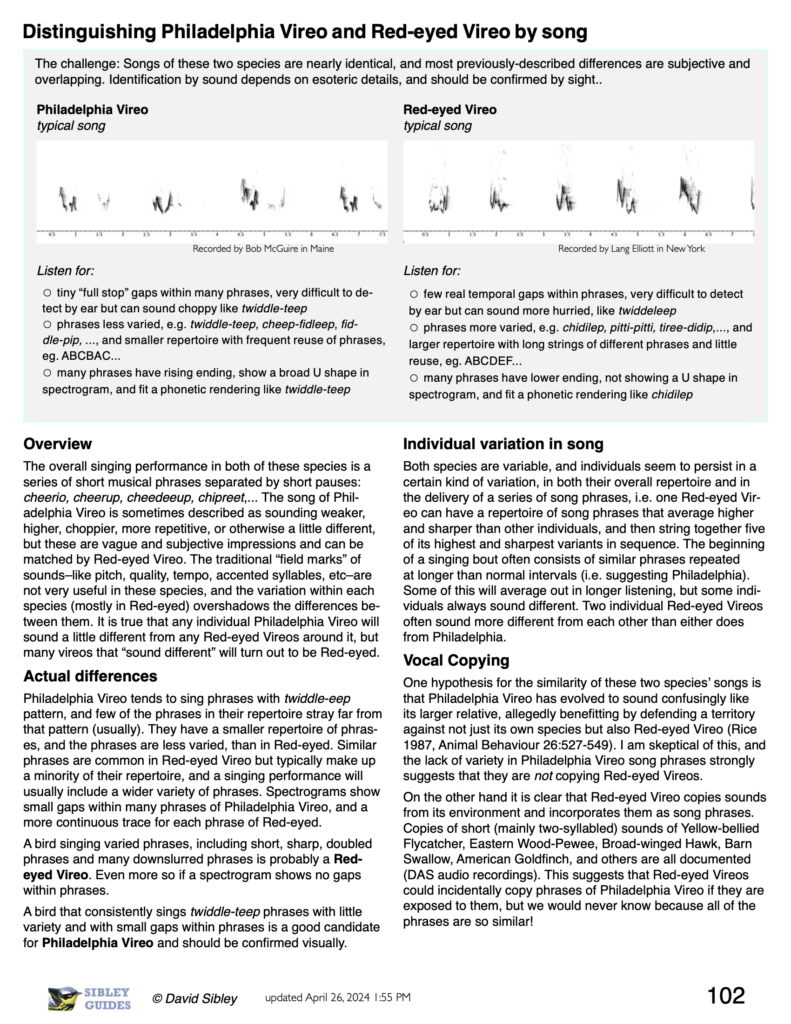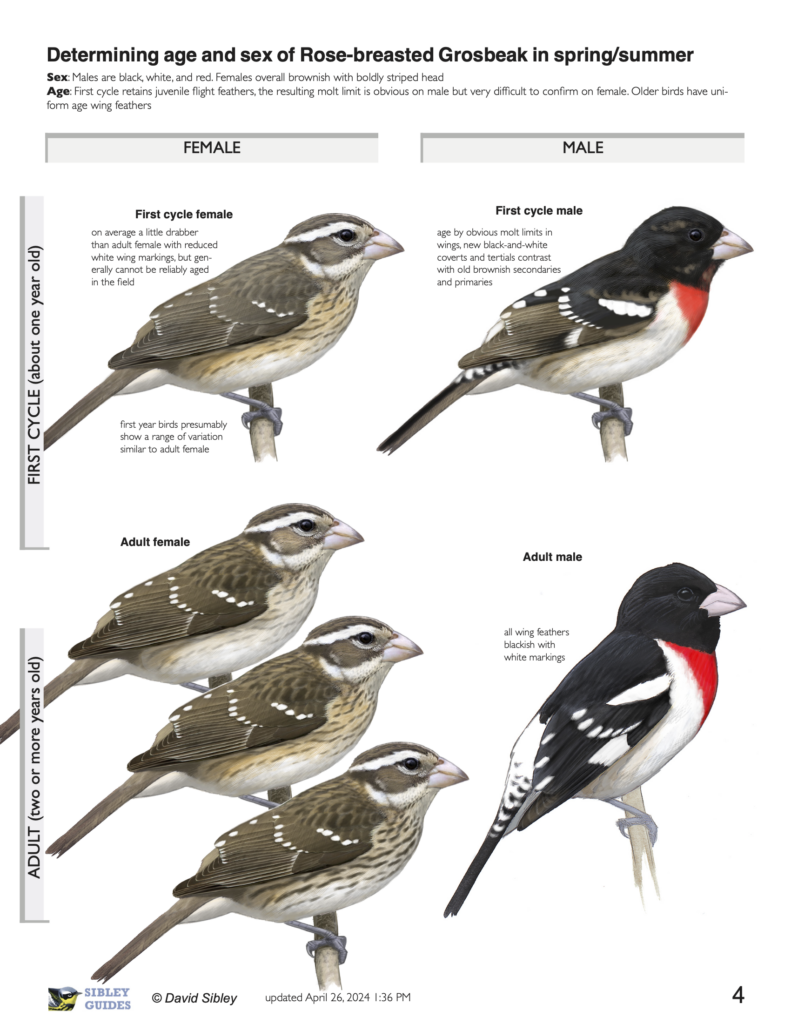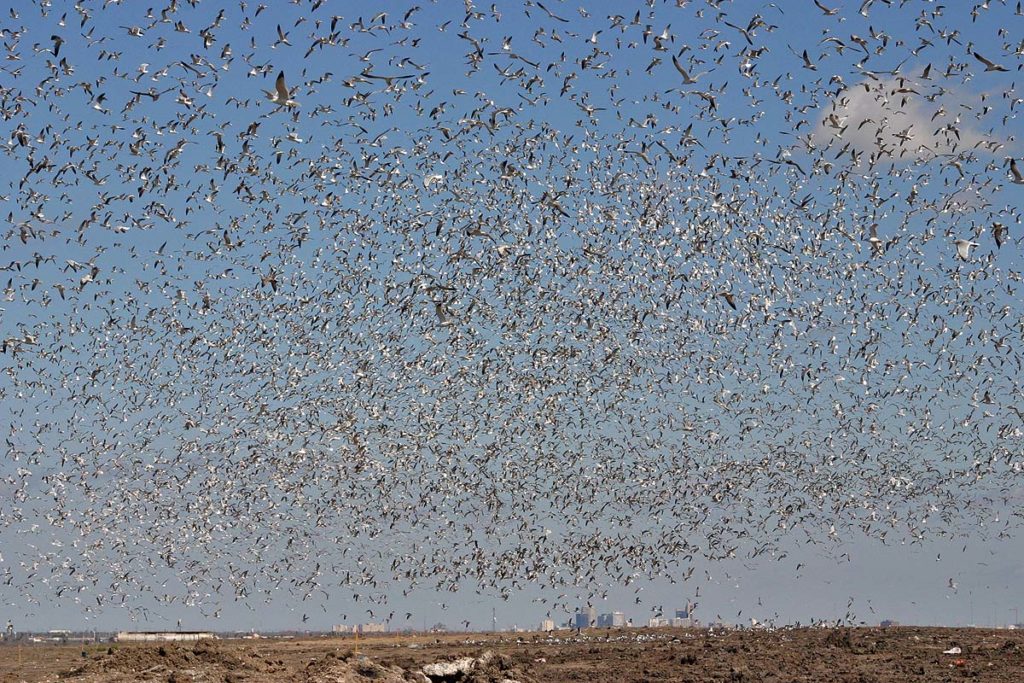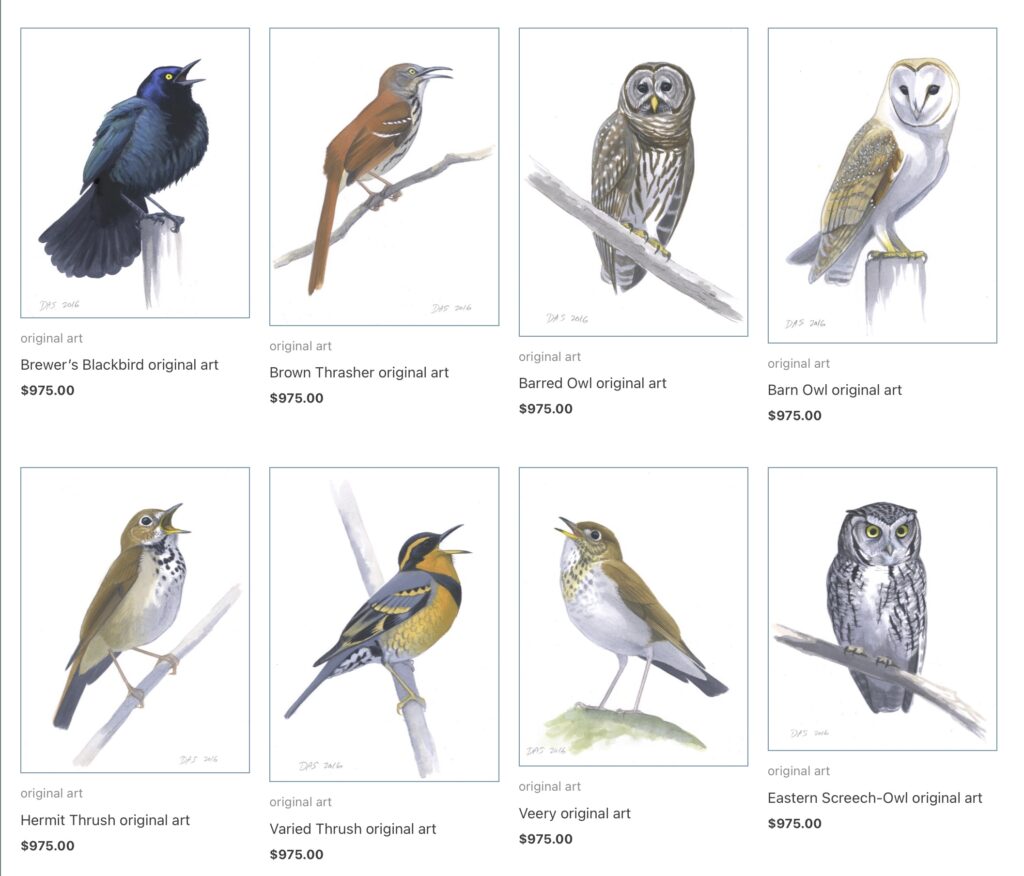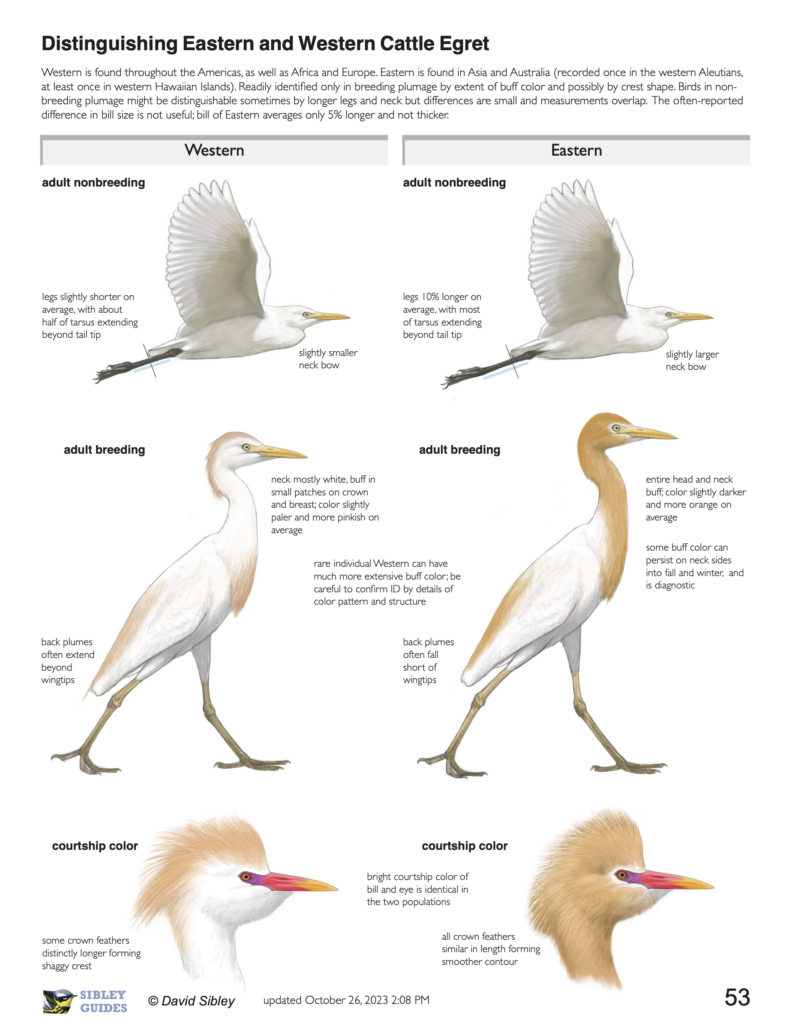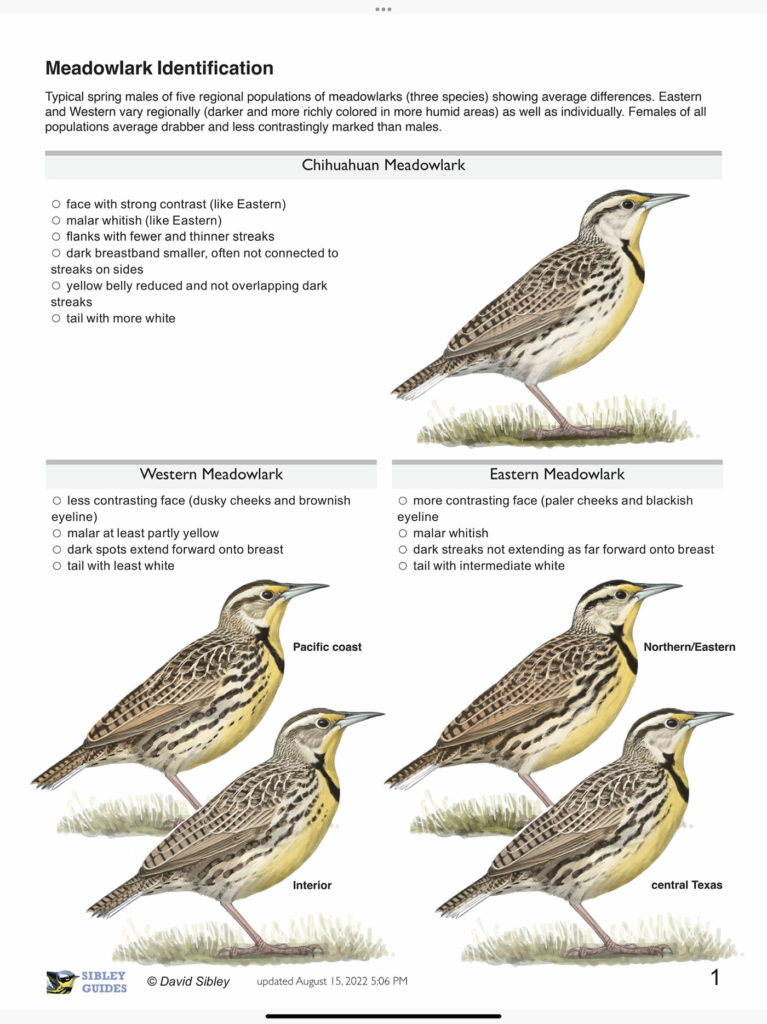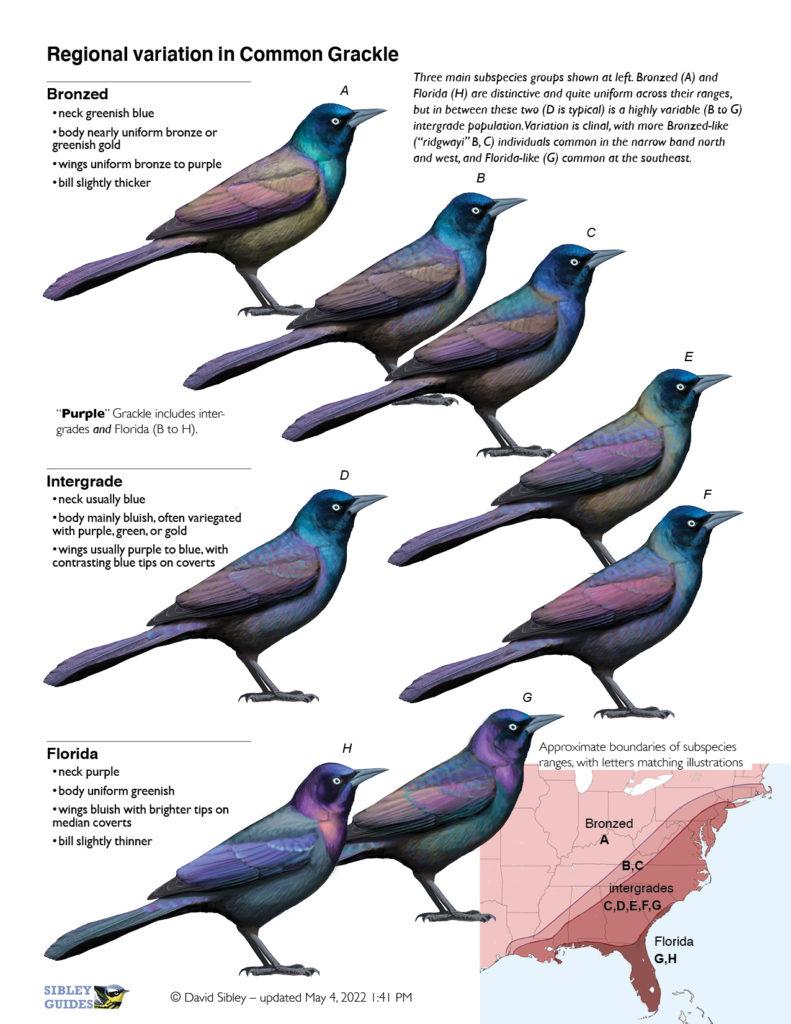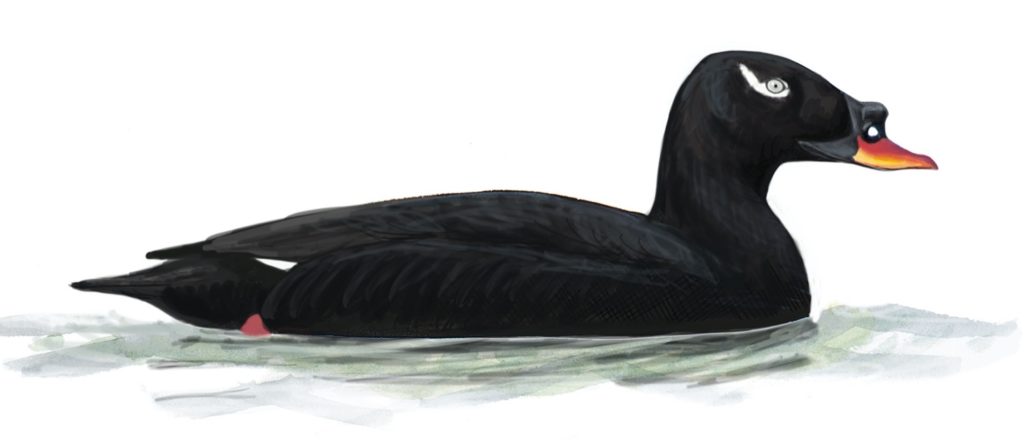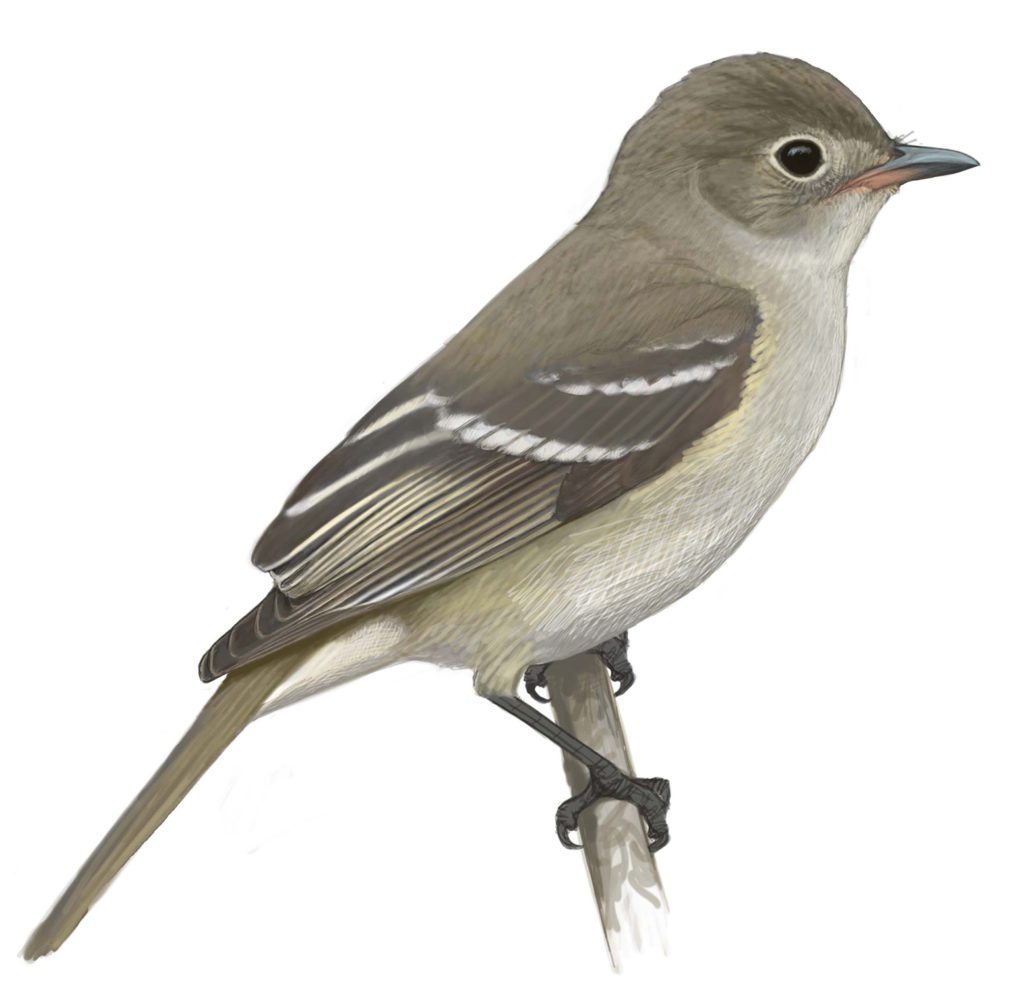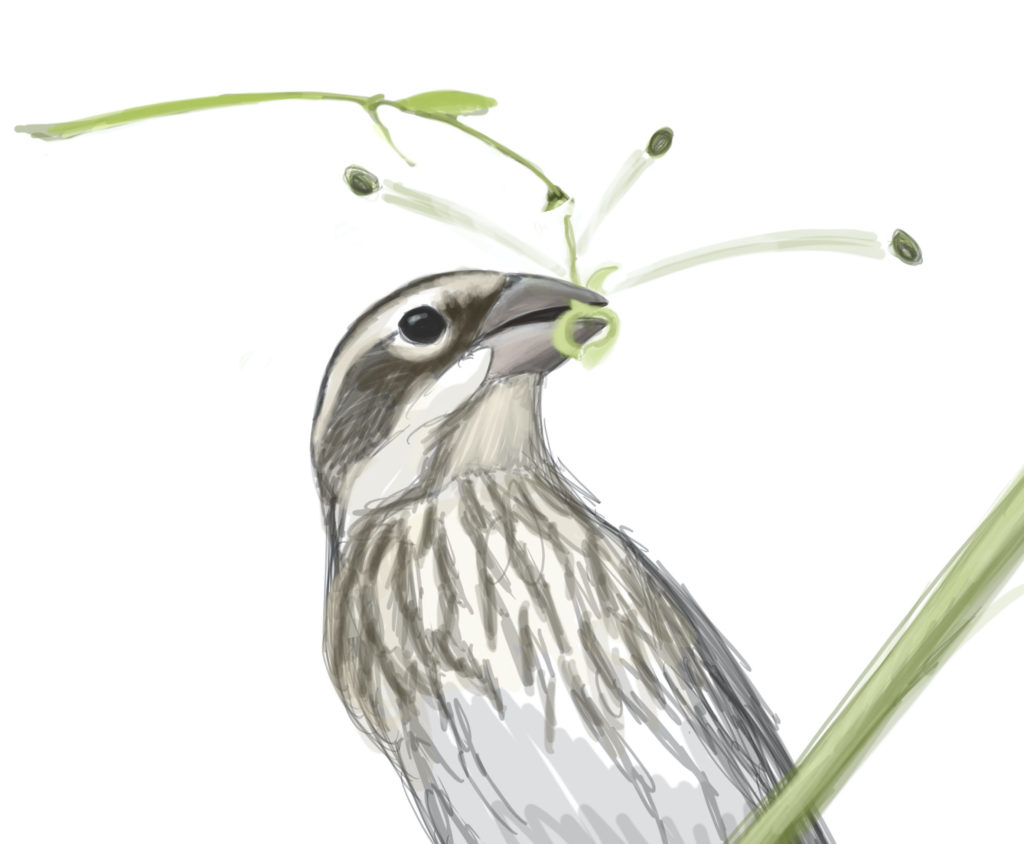Distinguishing Philadelphia and Red-eyed Vireos by song: Is it possible?
Possible? It might be, but most of the widely published “differences” are too subjective and/or too variable to be of any value. I dug into this a couple of years ago and discovered some details that seem more reliable, which are summarized in the one page file here (also as a pdf via this link: […]
Distinguishing Philadelphia and Red-eyed Vireos by song: Is it possible? Read More »


